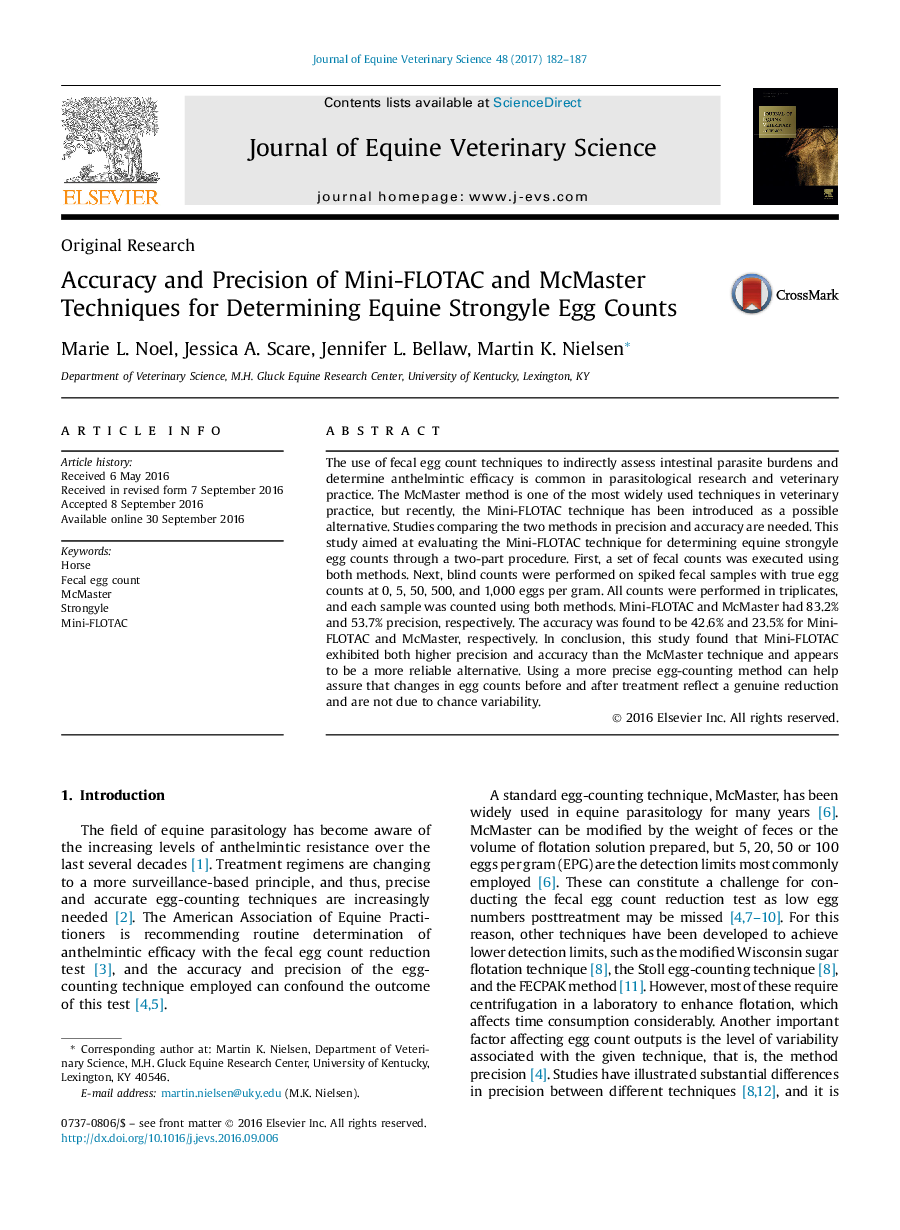| کد مقاله | کد نشریه | سال انتشار | مقاله انگلیسی | نسخه تمام متن |
|---|---|---|---|---|
| 5535730 | 1551552 | 2017 | 7 صفحه PDF | دانلود رایگان |

- A Mini-FLOTAC technique was validated and compared to McMaster.
- The Mini-FLOTAC technique had higher accuracy and precision.
- The Mini-FLOTAC technique had higher sensitivity and specificity.
The use of fecal egg count techniques to indirectly assess intestinal parasite burdens and determine anthelmintic efficacy is common in parasitological research and veterinary practice. The McMaster method is one of the most widely used techniques in veterinary practice, but recently, the Mini-FLOTAC technique has been introduced as a possible alternative. Studies comparing the two methods in precision and accuracy are needed. This study aimed at evaluating the Mini-FLOTAC technique for determining equine strongyle egg counts through a two-part procedure. First, a set of fecal counts was executed using both methods. Next, blind counts were performed on spiked fecal samples with true egg counts at 0, 5, 50, 500, and 1,000 eggs per gram. All counts were performed in triplicates, and each sample was counted using both methods. Mini-FLOTAC and McMaster had 83.2% and 53.7% precision, respectively. The accuracy was found to be 42.6% and 23.5% for Mini-FLOTAC and McMaster, respectively. In conclusion, this study found that Mini-FLOTAC exhibited both higher precision and accuracy than the McMaster technique and appears to be a more reliable alternative. Using a more precise egg-counting method can help assure that changes in egg counts before and after treatment reflect a genuine reduction and are not due to chance variability.
Journal: Journal of Equine Veterinary Science - Volume 48, January 2017, Pages 182-187.e1